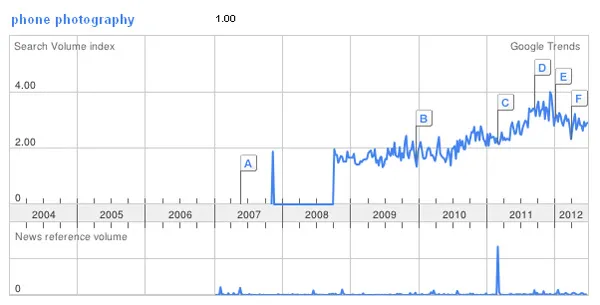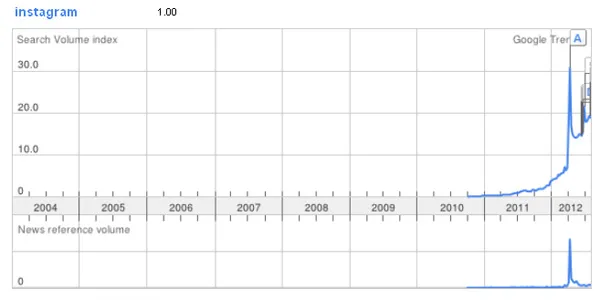With modern cell phones and smartphones it seems that DSLR cameras are dying. Our smartphones are no longer just ordinary phones. They open the entire world in front of you, so that you can easily make phone calls, send messages, browse the Internet, order goods and services and pay for them, play games, read books and take photos.
There are many camera phones with macro, fish eye, wide angle and telephoto lenses. They also allow to adjust aperture, contrast, brightness, ISO and the heaven knows what else. Some phones can even compete with common cameras in convenience, portability and photos quality.
It’s considered that in 2006, half of the world’s mobile phones had a built-in camera and that was a beginning of the phoneography boom. From that time camera phones become more and more sophisticated.
And now let’s pay attention to the term “phone photography” in Google Trends.

Take a look at the graph and you’ll see that camera phones win the world with confidence. Probably, the term “tabletography” or something like “tablets photography” will soon be created too. Portability apart, smartphones take the lead over traditional DSLRs in the ability to connect to the web, to edit photos and to share them within social networks. With Instagram rise this process finally got irreversible. By the way, have you seen Instagram’s trend? It goes overboard!

Nobody knows what ever will be with digital cameras in future, but they say that it can be in danger because of feature-rich smartphones with powerful lenses and photography systems.
Featured Examples.
Hammocks by Cuco de Venegas

Photo by Tyson Wheatley

Fly by… by Paul Moore

iPhone Photography by dj271
